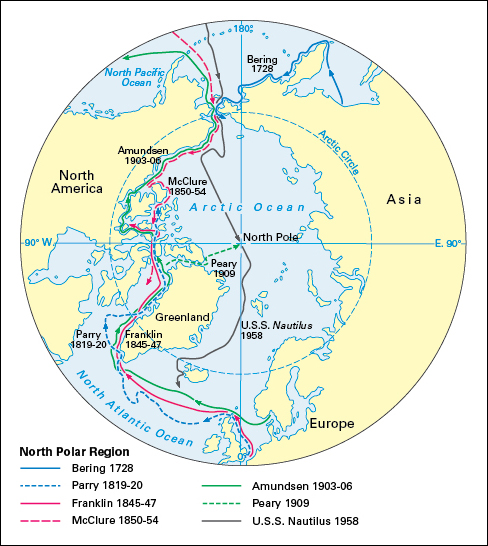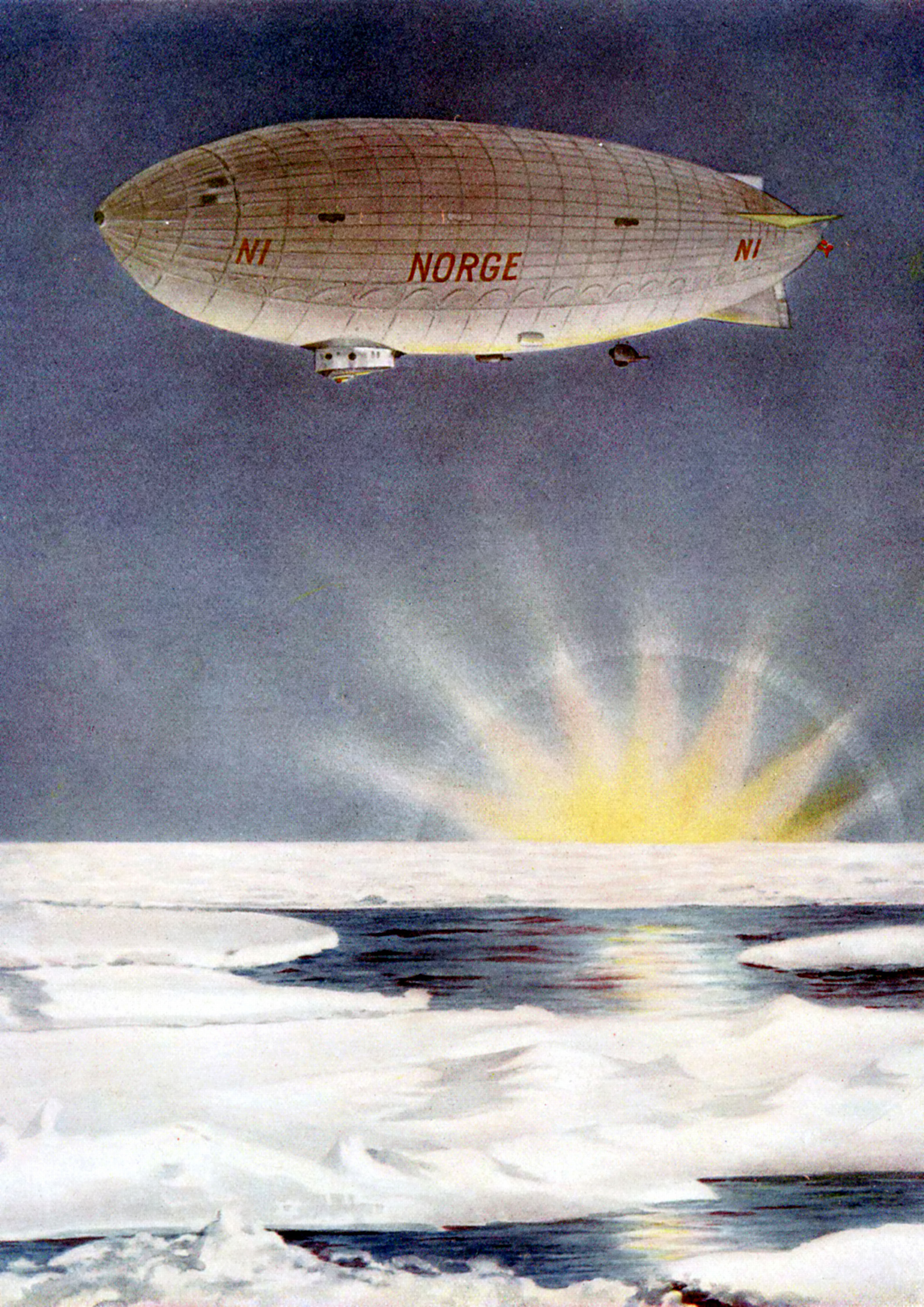North Pole, also known as the north geographic pole, is the point in the Northern Hemisphere where Earth’s lines of longitude meet. It is located at 90° north latitude. To someone standing at the North Pole, all directions point south. Other north poles include the instantaneous north pole, the north pole of balance, the north magnetic pole, and the geomagnetic north pole. The North Pole is found near the center of the Arctic Ocean in an area that is usually covered with sea ice. The sea ice at the North Pole is typically 6 to 10 feet (2 to 3 meters) thick, though studies indicate the thickness of the ice has decreased in recent years. Scientists believe this is likely due to global warming.
At the North Pole, there is no time zone, so any local time can be used. Under international law, the North Pole and the ocean surrounding it are not owned by any nation, although Russia placed a flag on the seabed beneath the pole in 2007. The nearest permanently inhabited place is Alert, which is 508 miles (818 kilometers) from the pole in the Qikiqtaaluk region of the Canadian territory of Nunavut.
The American explorer Robert E. Peary led the first expedition usually credited with reaching the North Pole. The expedition included Matthew Henson, who was Peary’s assistant, and four Inuit. They made the trip by dog team in 1909. The American explorers Richard E. Byrd and Floyd Bennett are credited with reaching the pole by airplane in 1926, though recent evidence indicates they might not have succeeded. In 1958, the USS Nautilus became the first submarine to pass under the Arctic ice to the pole. In 1978, Naomi Uemura of Japan became the first person to reach the pole alone. He traveled by dog sled.


The instantaneous north pole lies at the point where Earth’s axis of rotation meets the surface. Unlike the north geographic pole, the instantaneous north pole changes location. Earth wobbles slowly as it turns around its axis, causing the instantaneous north pole to move. This pole takes 433 days to move clockwise around an irregular path called the Chandler circle. The center of the Chandler circle is known as the north pole of balance. The location of this pole shifts with each cycle of the Chandler circle. Since the 1990’s, the north pole of balance has turned east and begun moving more quickly. Some scientists think that melting ice due to climate change caused this change in speed and direction.
The north magnetic pole is the point where the planet’s magnetic field points vertically downward—that is, straight toward Earth’s surface. If a magnetic compass rotated in three dimensions, it would point straight downward at this point. The north magnetic pole is sometimes referred to as the north dip pole.
As Earth’s magnetic field changes, the north magnetic pole moves. Today, the north magnetic pole is in the Arctic Ocean off northern Canada. Each year, it moves away from Canada and closer to Russia. Since the pole’s location was first discovered, it has moved more than 1,000 kilometers (621 miles), and its movement has accelerated. In recent decades, it has been observed to move more than 50 kilometers (31 miles) per year. Scientists estimate the pole is currently moving at 45 to 55 kilometers (28 to 34 miles) per year.
The British explorer Sir James Clark Ross discovered the north magnetic pole in 1831, on the Boothia Peninsula in Canada. Since its discovery, the north magnetic pole has moved closer to the north geographic pole.
The geomagnetic north pole is a more approximate point than the magnetic north pole. The geomagnetic north pole is the point where the magnetic field points vertically downward in scientific models (simulations) of Earth’s magnetic field.
